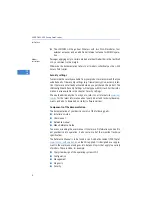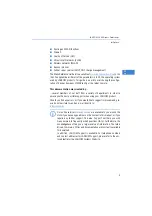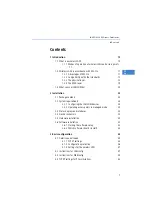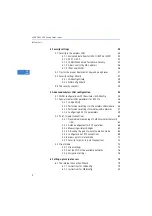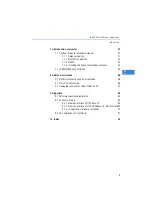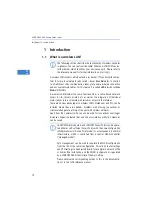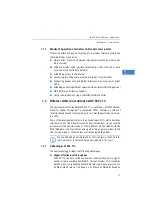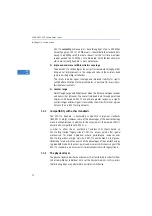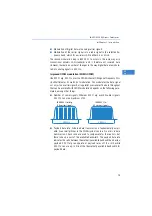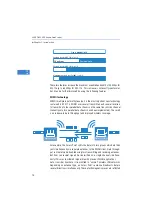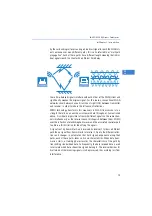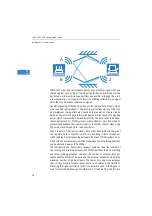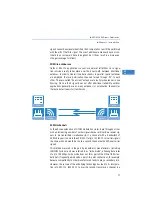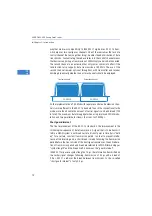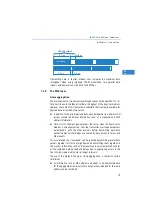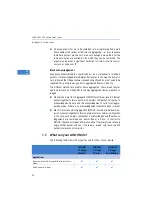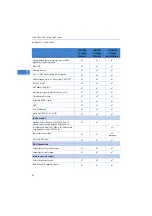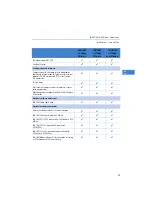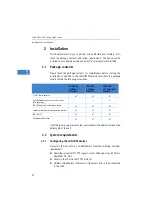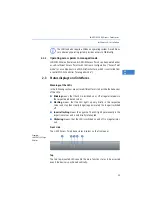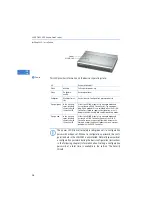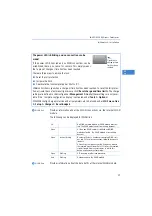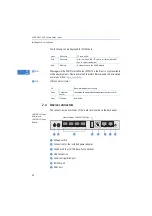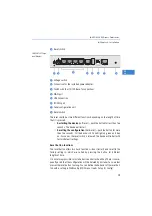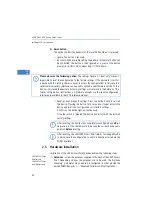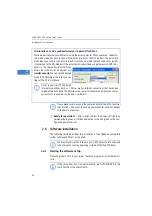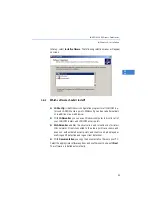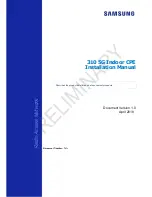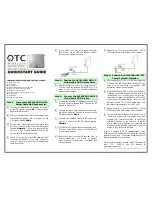
LANCOM L
-
300 Access Point series
Chapter 1: Introduction
18
EN
way that maintains compatibility to IEEE 802.11a/g devices. 802.11n trans-
mits data over two contiguous channels. One of these assumes the task of a
control channel that, among other things, handles the administration of data
transmission. Concentrating these basic tasks into the control channel means
that devices supporting a transmission at 20 MHz only can also be connected.
The second channel is an extension that only comes comes into effect if the
remote client also supports data transmission at 40 MHz. The use of the
second channel remains optional throughout, with transmitter and receiver
deciding dynamically whether one or two channels should be employed.
As the implementation of 40 MHz with separate control and extension chan-
nels is more efficient in the 802.11n standard than in the conventional turbo
mode, more than double the amount of carrier signals can be obtained (108
in total). The maximum data throughput when using improved OFDM modu-
lation and two parallel data streams thus rises to 270 Mbps.
Short guard interval
The final improvement of the 802.11n standard is the improvement in the
chronological sequence of data transmission. A signal that is to be transmit-
ted in a WLAN system is not broadcast at a distinct point in time but is "held
up" for a certain, constant transmission period. In order to prevent interfe-
rence at the receiving end, a short break is made following the transmission
period before the transmission of the next signal commences. The entire dura-
tion of transmission period and break are referred to in WLAN terminology as
"symbol length" and the break itself is known as the "guard interval".
IEEE 802.11a/g uses a symbol length of 4 μs: the information transmitted on
the carrier signal changes following transmission of 3.2 μs and a break of
0.8 μs. 802.11n reduces the break between transmissions to the so-called
"short guard interval" of only 0.4 μs.
20 MHz
20 MHz
Control channel
Extension channel

